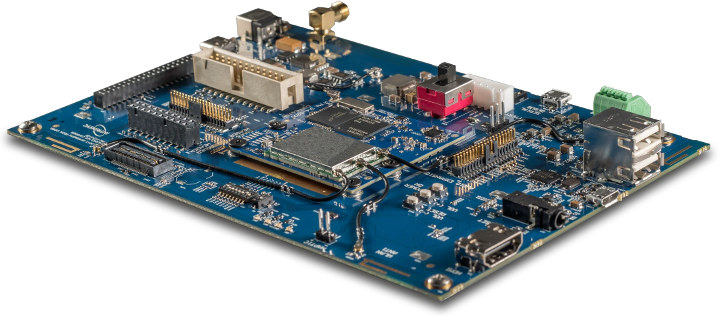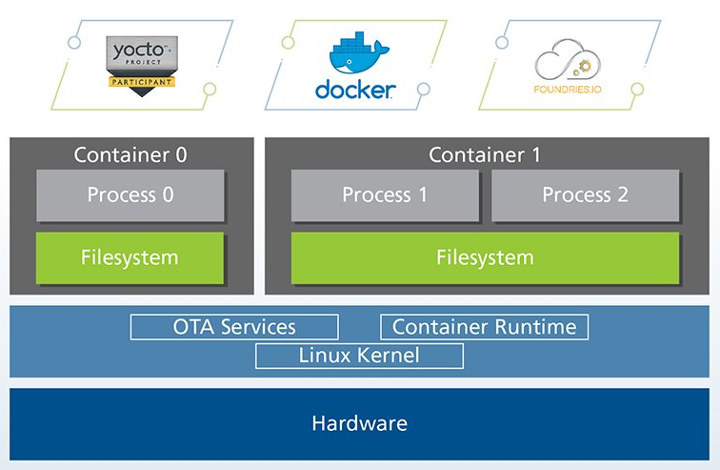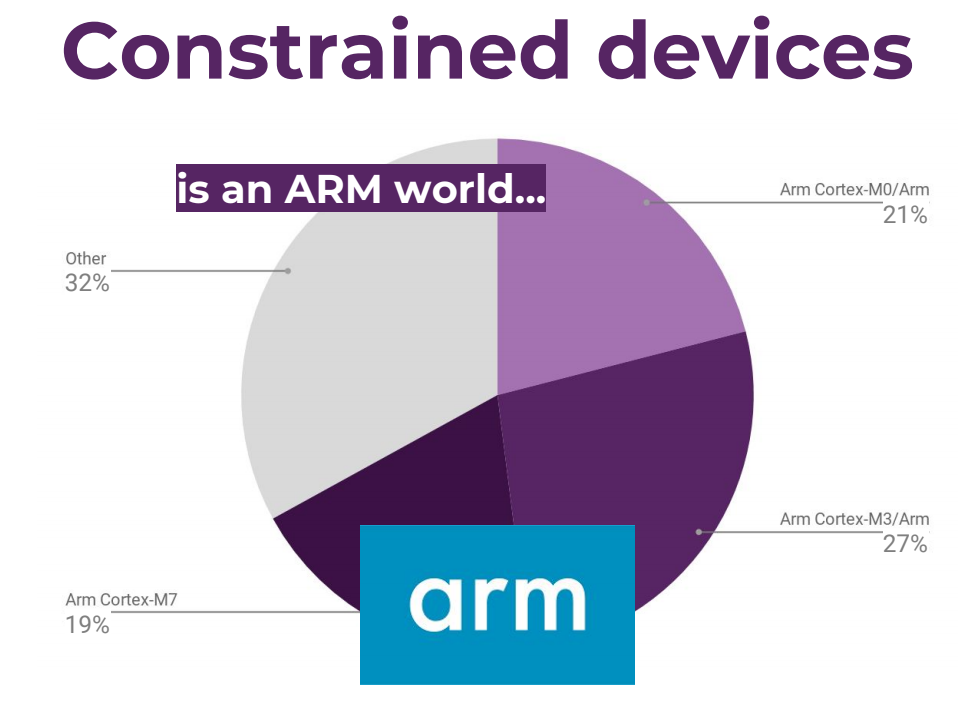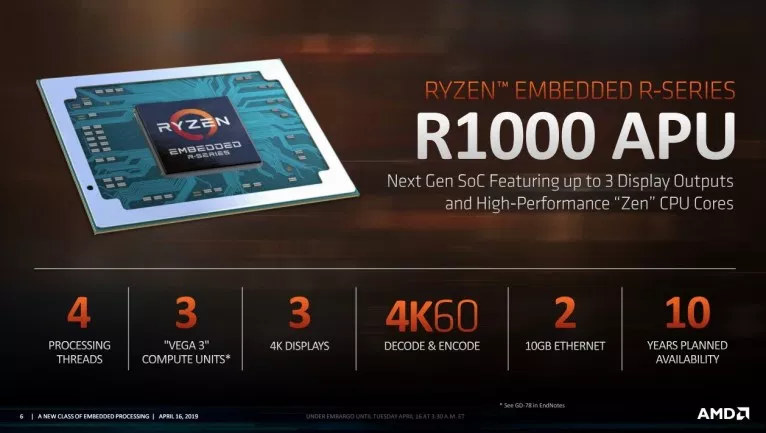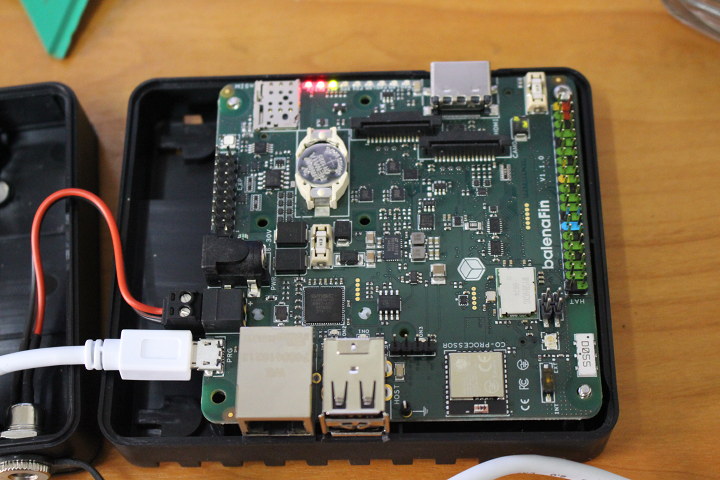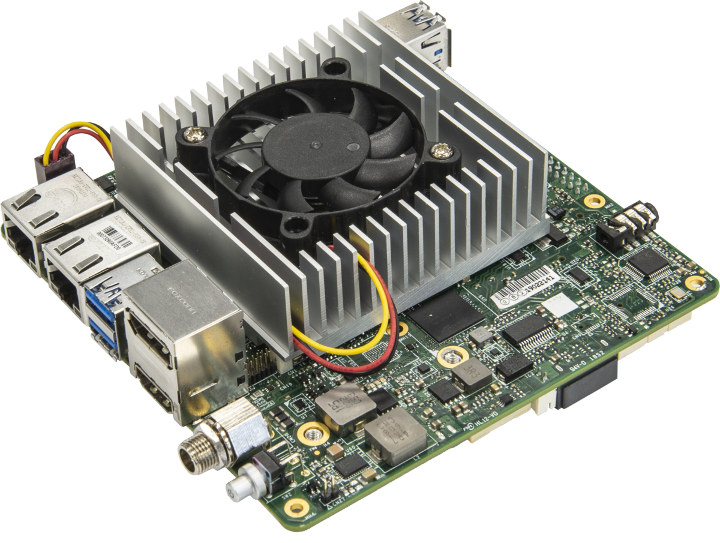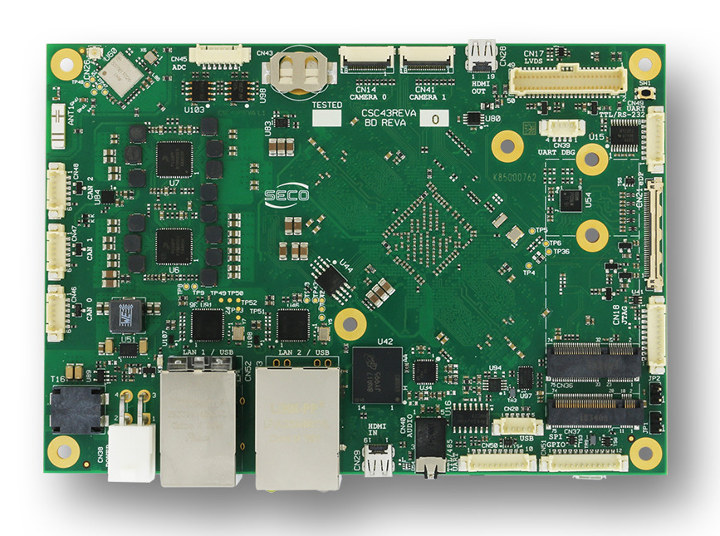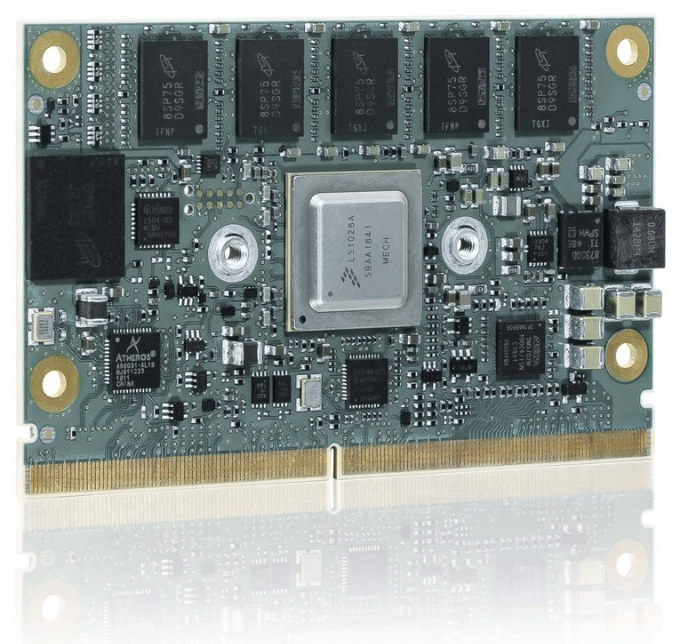Intrinsyc has just announced the availability of the Open-Q 212A system-on-module and Home Hub Development Kit based on Qualcomm Home Hub 300 Platform powered by the Qualcomm APQ8009 SoC better known as Snapdragon 212. The module supports multi-mic beamforming, audio canceling, HiFi audio, as well as WiFi 5 and Bluetooth connectivity, which makes it suitable for integration into cost-sensitive home hub, home automation, and smart audio devices featuring voice control, AI, and wireless connectivity. Open-Q 212A system-on- module Open-Q 212A SoM, which should not be confused with the company’s Open-Q 212 SBC released two years ago, features for the following specifications: SoC – Qualcomm Snapdragon 212 processor (APQ8009) quad-core Arm Cortex-A7 @ 1.267GHz with Adreno 304 GPU, Qualcomm QDSP6 DSP System Memory – 1GB LPDDR3 RAM Storage – 4GB eMMC Flash storage Video – 720p@30fps playback; up to 720p playback with H.264 (AVC) and H.265 (HEVC); up to 720p H.264 […]
Toradex Torizon Industrial Linux Distribution Targets Windows Developers
When we interviewed Toradex right before Embedded World 2019, they told us they would focus on their new software offering called Torizon, an easy-to-use industrial Linux Platform, especially targeting customers are coming from the Windows / WinCE environment or who have only experience with application development and are not embedded Linux specialists. The company has now officially launched Torizon, and provided more details about their industrial open source software solution especially optimized for their NXP i.MX modules. Torizon specifically relies on foundries.io Linux microPlatform which provides full system with a recent stable kernel, a minimal base system built with OpenEmbedded/Yocto, and a runtime to deploy applications and services in Docker containers. The microPlatform is part of TorizonCore (light blue section above) that also includes an OTA client (Aktualizr). TorizonCore is free open-source software, and serves as the base to run software containers. To get started, Torizon provides a Debian container […]
Eclipse IoT Survey Report Reveals Arm & Linux Dominate, Security Concerns
The Eclipse IoT Working Group has just released a report asking the global IoT developer community to share their perceptions, requirements, and priorities. And with over 1,700 individuals taking the survey between February and March 2019, the key findings are interesting: IoT drives real-world, commercial outcomes today. 65% of respondents are currently working on IoT projects professionally or will be in the next 18 months. IoT developers mostly use C, C++, Java, JavaScript, and Python AWS, Azure, and GCP are the leading IoT cloud platforms Top three industry focus areas remain the same as last year: IoT Platforms, Home Automation, and Industrial Automation / IIoT. MQTT remains the dominant IoT communication protocol leveraged by developers The Eclipse Desktop IDE is the leading IDE for building IoT applications The last point may be slightly biased because the survey was done by the Eclipse IoT Working Group, so most respondents were already […]
AMD Unveils Ryzen Embedded R1000 Dual Core Processors
Last year, AMD launched Ryzen Embedded V1000 series processor found in UDOO BOLT single board computer, industrial motherboards, and rugged mini PCs. The company has now introduced their second Ryzen Embedded processor family with AMD Ryzen Embedded R1000 SoC based on the same Zen cores, and offering 3x the performance per watt against the previous AMD R-Series SoC, and 4x the performance per dollar compared to a system based on an Intel Core i3-7100U Kaby Lake processor. AMD Ryzen Embedded R1000 processors all come with two cores / four thread configuration, 1MB L2 cache, 4MB L3 cache, VEGA 3 graphics, support for three 4K displays, 4K60 video decode & encode, dual 10Gbit Ethernet, and a TDP configurable between 12W and 25W. Two Ryzen Embedded R1000 processors have been announced so far: Ryzen Embedded R1606G with 2.6 GHz base frequency, 3.5 GHz one-thread boost frequency, and 1.2 GHz GPU Ryzen Embedded […]
Getting Started with balenaFin Developer Kit, balenaOS and balenaCloud
balena Fin is a carrier board for Raspberry Pi Compute Module 3/3+ designed specifically for industrial applications leveraging fleet management services provided by Balena. I received balenaFin developer kit last month, and in the first part of the reviewed shows how to assemble the kit. I’m now had time to spend more time with the kit, as well as BalenaOS Linux based operating system optimized for running Docker containers on embedded devices, and balenaCloud services to manage a fleet of devices from a web dashboard. I’ve mostly followed the instructions in the getting started guides here and there, and will document what I had to do to prepare the image, flash it to the board, and load a sample docker application locally, and through balenaCloud. Downloading and Configuring BalenaOS for balena Fin You’ll find BalenaOS in the download page. While we are using hardware based on a Raspberry Pi Compute […]
UP Xtreme Board to Feature Intel Whiskey Lake Processor
AAEON launched their UP board family back in 2015 with the original board featuring an Atom X5 Cherry Trail processor. Since then they’ve launched other models all based on processors with 10W or lower TDP (Thermal Design Power) such as UP Squared Apollo Lake development board. But the company has now upped the ante by going with Intel Core-U series Whiskey Lake processors (15W TDP) in their upcoming UP Xtreme single board computer (SBC) that will feature some of those Core i3/i5/i7 processors. UP Xtreme specifications: SoC- Intel Dual/Quad Core “Whiskey Lake” Core i3/i5/i7 processor @ 1.8 GHz (Boost frequnecy up to 3.9GHz for i3/i5, up to 4.6 GHz for i7) with Intel UHD graphics 620; 15W TDP System Memory – Up to 16GB dual-channel DDR4 memory (soldered on-board) Storage – 16GB to 128GB eMMC 5.1 flash, 1x SATA connector with power connector Video Output 1x eDP with backlight control […]
Seco SBC-C43 SBC Features NXP i.MX 8 QuadMax Processor, 8GB RAM
When NXP unveiled their first 64-bit i.MX processors in 2016, we had three families: i.MX 8 Cortex-A72/A53 for high performance, i.MX 8M Cortex-A53 for audio/video application, and i.MX 8X Cortex-A53 for low power applications. Most of the designs we’ve seen so far are based on i.MX 8M family, and we’ve seen few hardware platforms based on the top of the line i.MX 8 QuadMax SoC with two Arm Cortex-A72 cores, four Cortex-A53 cores, two Cortex-M4F real-time cores, and two GC7000XS/VX GPUs. We did cover several modules based on i.MX 8 QuadMax processor including Advantech ROM-7720 Qseven 2.1 Computer-on-Module, Toradex Apalis i.MX 8 CoM, and Congatec conga-SMX8 SMARC 2.0 SoM among others, but AFAICR I had yet to see an i.MX 8 QuadMax single board computer. So Seco SBC-C43 appears to be the first SBC powered by NXP’s most powerful i.MX 8 processor, coupled with up to 8GB DDR4, 32GB eMMC […]
Kontron SMARC-sAL28 System-on-Module Supports ECC Memory, Up to 5 TSN Ethernet Ports
Many systems-on-module are equipped with one Gigabit Ethernet transceiver / PHY, but NXP LS1028A powered Kontron SMARC-sAL28 SoM is equipped with two Gigabit Ethernet PHY, and can optionally support up to 5 TSN-capable Gigabit Ethernet ports directly from the controller thanks one PCIe line that can be used as a QSGMII (Quad Serial Gigabit Media Independent Interface) port. Furthermore, the module comes with up to 4GB non-ECC or ECC memory. “What is TSN?” you may ask. It stands for “Time-Sensitive Networking“, provides distributed time synchronization and deterministic communication using standard Ethernet networks for applications such as distributed synchronized measurements, coordinated distributed data logging, next-generation computer numeric control machining, automotive networks, and more as explained on National Instruments website. But let’s go back to Kontron SMARC-sAL28 system-on-module with the hardware specifications: SoC – NXP LS1028A dual Arm Cortex A72 processor, 3D GPU System Memory – Up to 4GB DDR3L ECC or […]


